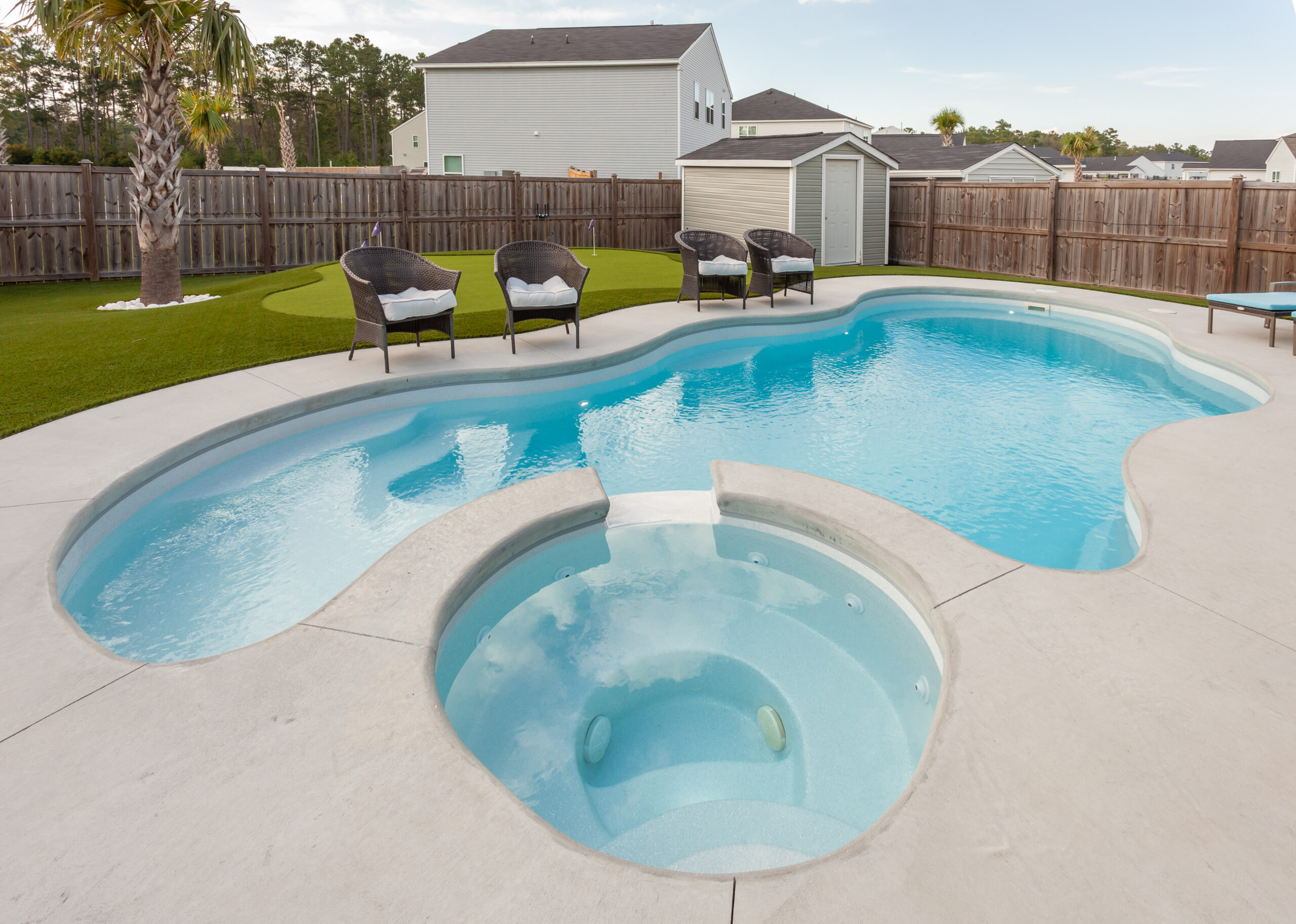Algae in My Pool: Types and Treatment
Algae is more than a cosmetic nuisance—it’s a living, growing threat to your pool’s balance, safety, and beauty. Left unchecked, it can damage surfaces, clog filters, and turn water from crystal clear to uninviting overnight.
At Heritage Pools, we help Charleston SC pool owners identify, eliminate, and prevent algae the right way—so you can Swim Here with confidence.
What Is Pool Algae?
Algae are microscopic plants that thrive in warm, sunlit, nutrient-rich environments. Even the cleanest pools can develop algae when sanitation, circulation, or filtration falls behind. Once it takes hold, it spreads fast—and traditional chlorine alone may not be enough.
The 3 Main Types of Pool Algae
1. Green Algae
- Most common form
- Appears as free-floating cloudiness or slimy green walls
- Caused by low chlorine levels or poor circulation
- Easy to treat but fast to return if not fully eliminated
2. Yellow Algae (Mustard Algae)
- Dusty yellow or brown deposits, often in shaded areas
- Clings stubbornly to walls and floors
- Resists normal chlorine levels and may survive even after shocking
- Can reappear quickly if not treated thoroughly
3. Black Algae
- Dark blue-black spots, usually in porous surfaces like concrete or plaster
- Anchors deeply into pool walls, forming protective layers
- Extremely tough to remove; often requires aggressive brushing and specialized algaecides
- Often returns if even a tiny fragment remains
Treatment: How We Eliminate Algae
Algae treatment isn’t one-size-fits-all. Our process includes:
Inspection & Diagnosis
- Identify the algae type
- Check chlorine levels, pH, stabilizer, and phosphates
- Inspect circulation and filtration systems for weaknesses
Professional Treatment
- Green Algae: Shock chlorination + brushing + clarifiers
- Yellow Algae: Specialty algaecides + vacuum to waste + multiple brushing cycles
- Black Algae: Surface scrubbing, targeted treatment, possible acid wash or refinishing if severe
Filter & Equipment Cleaning
- Backwash or replace filter media
- Clean out all skimmers, baskets, and returns
- In some cases, sanitize the plumbing system
Water Balance Restoration
- Reestablish proper chlorine levels and pH
- Stabilize water chemistry to prevent recurrence
- Schedule follow-up testing if needed
Prevention Is Power
Algae often strike after just a few days of imbalance. To prevent recurrence:
- Keep sanitizer levels consistent
- Brush walls and steps weekly
- Run your pump for 8–12 hours per day during warmer months
- Shock the pool after heavy use or storms
- Maintain ideal water chemistry year-round
We also recommend seasonal inspections and scheduled maintenance—especially before spring openings and during high-use summer months.

Don’t Let Algae Take Over
Whether it’s a green film or stubborn black spots, algae can quickly turn your pool into a source of stress. Let Heritage Pools take care of it—quickly, safely, and completely.
We service all pool types—Concrete, Fiberglass, and I-Beam—with a focus on long-term prevention and visual excellence.
Swim Here, and keep it clean all season.